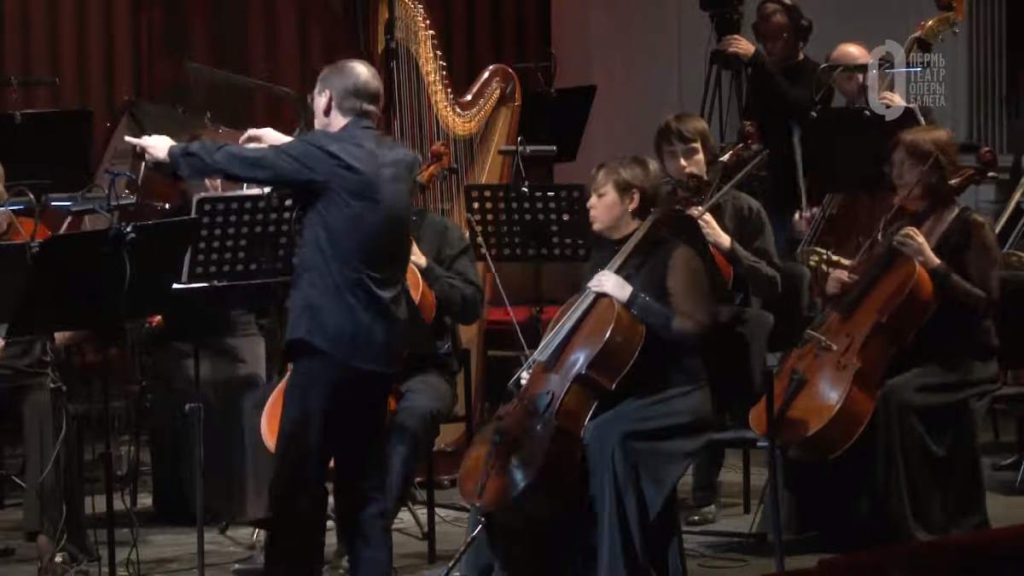Conducted by Norihiko Yoshikawa, the Cappella Accademica plays Wolfgang Amadeus Mozart’s Symphony No. 21 in A major, K. 134. This performance was recorded on November 25, 2016, at the Hamakita Culture Center in Hamamatsu, Shizuoka, Japan. The symphony was composed in August 1772, when the composer was 16 years old.
Wolfgang Amadeus Mozart’s Symphony No. 21
Mozart’s Symphony No. 21 in A major, K. 134, composed in 1772 when he was just 16 years old, is a work that reflects his early mastery of the symphonic form. Written during his third visit to Italy, this symphony showcases Mozart’s ability to blend elegance with youthful energy. The piece is marked by its bright and cheerful character, typical of his symphonies in major keys, and demonstrates a clear, balanced structure.
The orchestration is light and transparent, with strings taking the lead, supported by woodwinds and horns that add color and depth. Despite his young age, Mozart displays a sophisticated understanding of harmony and thematic development, weaving together melodies that are both charming and memorable. Symphony No. 21 is a testament to Mozart’s prodigious talent, offering a glimpse of the brilliance that would characterize his later, more mature works.
The symphony has the scoring of two flutes, two horns, and strings. There are four movements.
Movements
1. Allegro [3/4]
The first movement of Mozart’s Symphony No. 21 in A major, K. 134, is a lively and bright Allegro, setting an optimistic tone for the symphony. It opens with a graceful, flowing theme that immediately captures the listener’s attention. Mozart’s use of light, airy orchestration allows the melody to shine, with the strings leading and woodwinds providing delicate accents. The movement is marked by its clarity and elegance, featuring a well-balanced structure with dynamic contrasts and a playful character. This youthful energy, combined with Mozart’s refined compositional skill, makes the opening movement both engaging and charming.
2. Andante [2/4]
The second movement of Mozart’s Symphony No. 21 in A major, K. 134, is an Andante that offers a contrast to the lively first movement with its serene and lyrical character. This movement unfolds with a gentle, flowing melody, showcasing Mozart’s gift for creating simple yet deeply expressive music. The strings play a central role, delivering the main theme with warmth and elegance, while the woodwinds add subtle color and depth. The overall mood is one of calm and grace, with a delicate interplay between the instruments that creates a sense of intimacy. This movement highlights Mozart’s ability to evoke deep emotion through simplicity and restraint.
3. Menuetto: Trio [3/4]
The third movement of Mozart’s Symphony No. 21 in A major, K. 134, is a Menuetto: Trio, embodying the elegance and charm typical of classical dance forms. The Menuetto is stately and graceful, with a clear, rhythmic structure that reflects the courtly dance tradition. It features a lively melody in the strings, with the woodwinds providing complementary harmonies that add to the movement’s refined character.
The Trio section offers a contrast with a more delicate and lyrical theme, often featuring the woodwinds more prominently. It provides a gentle interlude before the return of the Menuetto, maintaining the movement’s overall light and graceful mood. This Menuetto: Trio movement highlights Mozart’s skill in blending formality with expressive musicality, making it a delightful and sophisticated component of the symphony.
4. Allegro [2/2]
The fourth movement of Mozart’s Symphony No. 21 in A major, K. 134, is an Allegro that serves as a vibrant and exhilarating finale. This movement is marked by its lively tempo and energetic spirit, capturing the joyful essence of Mozart’s youthful creativity. The music features a playful, upbeat theme that is both catchy and engaging, with quick, nimble passages that highlight the virtuosity of the strings.
Mozart’s use of dynamic contrasts and clever orchestration keeps the movement exciting and full of surprises. The movement’s structure is clear and well-balanced, with the theme being developed and varied throughout, maintaining the listener’s interest. The Allegro’s brisk pace and rhythmic drive bring the symphony to a rousing conclusion, leaving a lasting impression of Mozart’s brilliance in combining technical skill with joyful expression. This final movement is a fitting close to a symphony that is both elegant and full of life.
Sources
- Symphony No. 21 (Mozart) on Wikipedia
- Symphony No. 21 in A major, K. 134 (Mozart, Wolfgang Amadeus) on the International Music Score Library website
